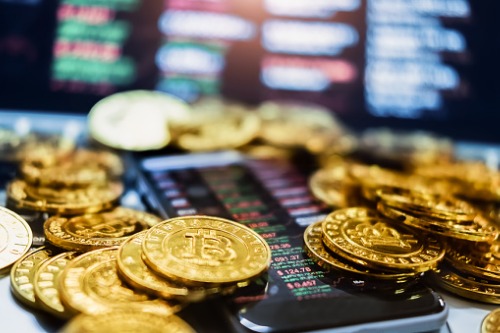A largely unregulated ecosystem couple with weak vetting of data contributes to publication of dubious numbers

Months after the release of a report suggesting that an overwhelming proportion of crypto trading is actually fake, new research has been released shedding light on the specific tactics employed by certain exchanges.
The new findings come from Alameda Research, a 20-person crypto trading firm with offices in Hong Kong and California. In a report, the firm exposed several exchanges that purportedly use volume-padding tricks in an effort to raise their profile among buyers and issuers of cryptocurrency.
“More activity means a higher rank on the still-popular website CoinMarketCap, which can attract new users,” explained a recent report on Forbes. “Exchanges also charge fees to new cryptocurrency projects that want to get listed in their marketplace, and the perception of popularity helps them command higher rates.”
Because crypto exchanges are essentially just websites or apps, and many outside the US enjoy a lack of regulation, such platforms are largely able to publish numbers at their discretion and declare them as trades. CoinMarketCap, the Forbes article noted, often takes exchanges at their word and puts out dubious numbers without sufficient vetting.
One flagrant example of volume-juicing reportedly comes from BKEX, a cryptocurrency exchange registered in the British Virgin Islands. The transactions reflected in its trading history exactly mirror those of Binance, one of the world’s largest crypto exchanges, with a delay of several seconds.
Another method exposed by Alameda’s research is to report substantial, fake transactions buried in a flurry of smaller ones. This was purportedly used by CoinEgg, a Hong Kong-registered exchange, during a period when Alameda observed 15 different offers to buy and sell litecoin (LTC) with a maximum quantity of 134 LTC; amid those transactions were several trades printed as large as 2,000 LTC, the report said.
Alameda also noted how some exchanges report trades executed at prices and sized that fall nowhere within the bids and asks sitting in the order books they publish. Digifinex, based in Singapore, reportedly printed several trades printed at US$8,290 and US$8,293 — below the exchange’s reported bids and asks, which were between US$8,296 and US$8,298. A digital exchange in Moscow, LAToken, allegedly published bids and offers of no more than 1.6 bitcoin in their order book, yet implausibly reported several trades with sizes up to 20 bitcoin.
“[T]here’s also the well-worn method of simply printing transactions that fall in the middle of the bid and ask prices, which Alameda’s research spotted in IDAX and Coineal,” reported Forbes.
The report from Alameda also claims that crypto trades — which involve both spot trades of actual digital assets and derivatives like bitcoin futures —occur to the tune of US$38 billion in real volume a day, with 87% occurring on Asian exchanges and just 9% on US-domiciled venues. A likely contributor to Asia’s dominance, the report said, is the strict regulatory environment in the US.
Follow WP on Facebook, LinkedIn and Twitter



